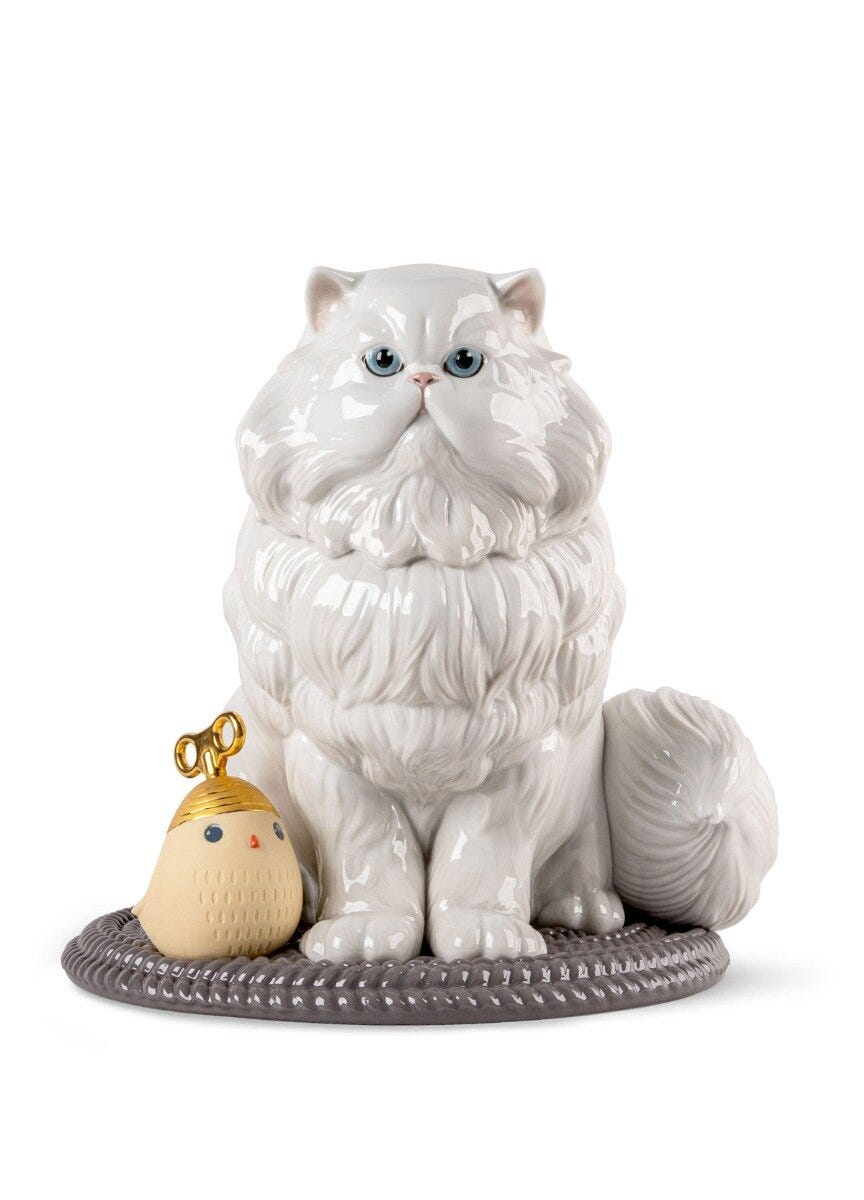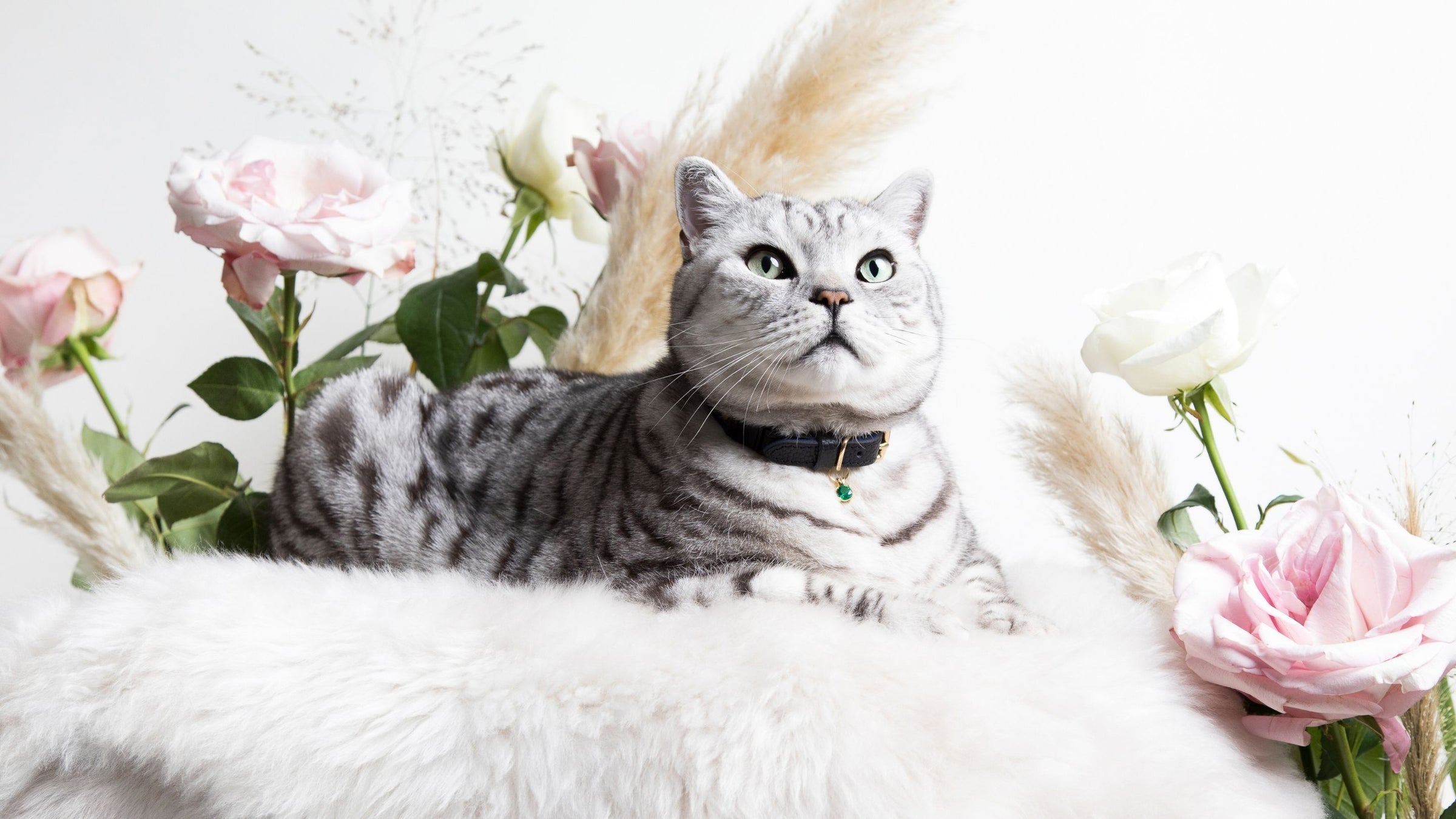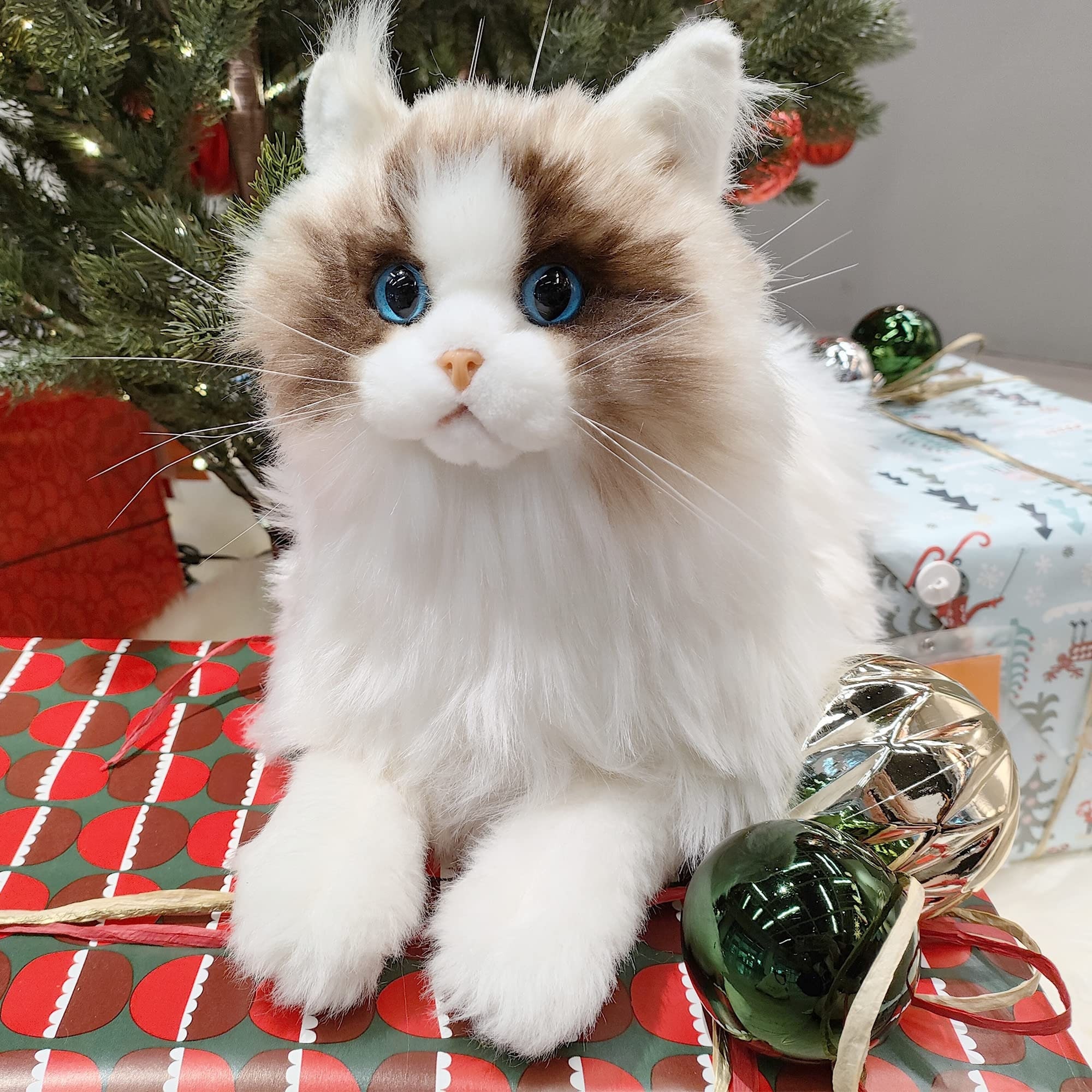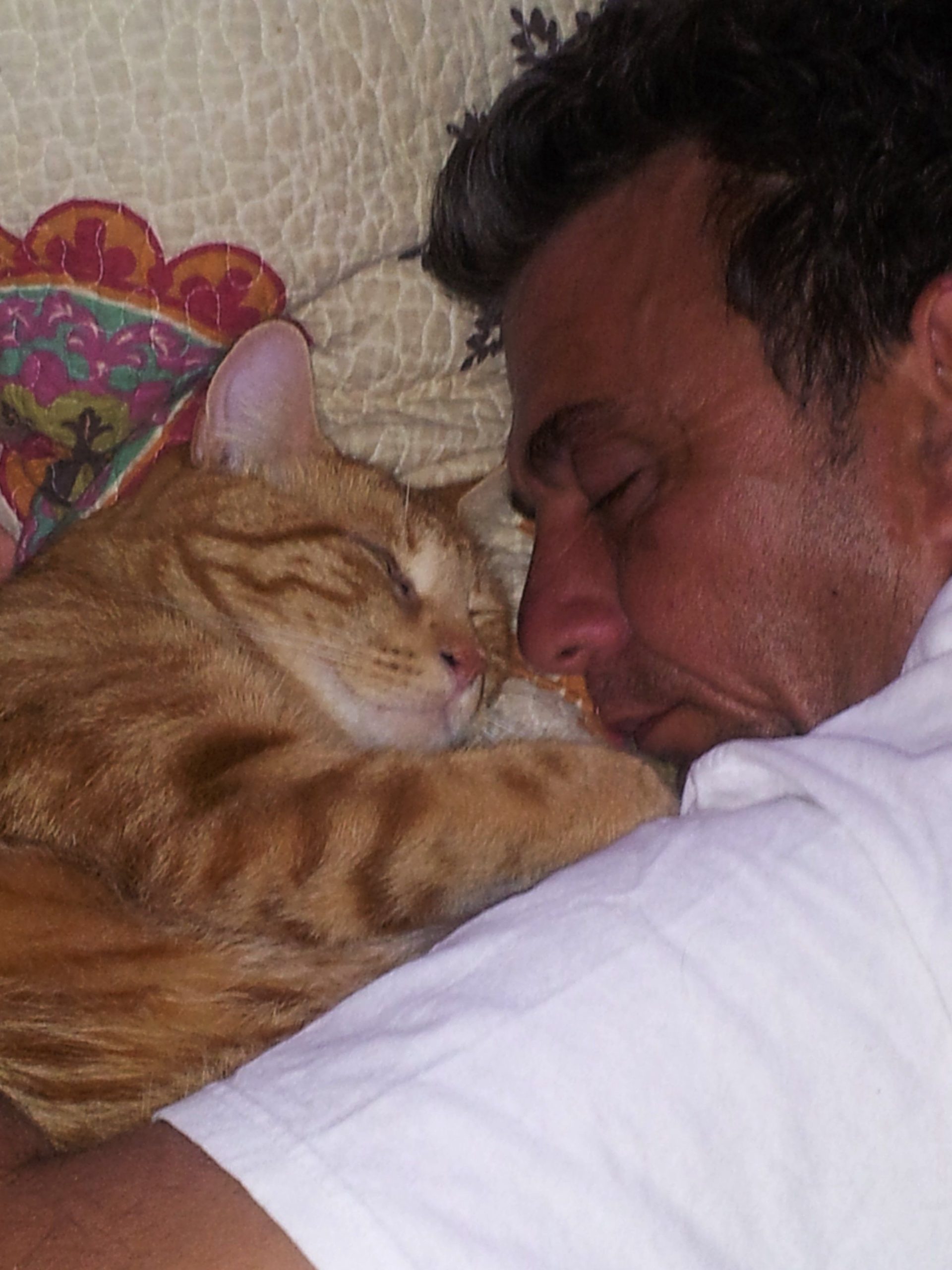Contents
- I. Introduction to Persian Cats
- II. Characteristics of Persian Cats
- III. Pros of Having a Persian Cat as a Family Pet
- IV. Cons of Having a Persian Cat as a Family Pet
- V. Frequently Asked Questions about Persian Cats
- 1. What is the origin of Persian cats?
- 2. What makes Persian cats unique?
- 3. How do you care for a Persian cat’s coat?
- 4. Are Persian cats suitable for families with children?
- 5. Do Persian cats have any specific health issues?
- 6. Are Persian cats high-maintenance?
- 7. Can Persian cats be kept as indoor pets?
- 8. Do Persian cats get along with other pets?
- 9. Are Persian cats hypoallergenic?
- 10. How long do Persian cats usually live?
- I. Introduction to Persian Cats
- II. Characteristics of Persian Cats
- III. Pros of Having a Persian Cat as a Family Pet
- IV. Cons of Having a Persian Cat as a Family Pet
I. Introduction to Persian Cats

Persian cats are one of the most popular and recognizable cat breeds in the world. Known for their luxurious long fur, adorable flat faces, and sweet personalities, Persian cats have captured the hearts of many cat lovers. Originating from Persia (modern-day Iran), these cats were once cherished by royalty and nobility for their beauty and elegance.
A Brief History
The history of Persian cats can be traced back to ancient times. They were first mentioned in hieroglyphs in ancient Egypt, where they were admired for their exquisite appearance. Persians were then brought to Europe in the 17th century and quickly gained popularity among the aristocracy. In the late 19th century, Persian cats were imported to the United States and became a beloved breed among cat enthusiasts.
Physical Characteristics
Persian cats are known for their distinct physical features. They have a round head with large, expressive eyes and a short, broad nose. Their ears are small and set apart, giving them a cute and innocent look. The most striking feature of Persian cats is their long and silky coat, which requires regular grooming to prevent matting. They come in a variety of colors and patterns, including white, black, blue, cream, and tortoiseshell.
Temperament
Persian cats are known for their gentle and calm nature. They are typically reserved and enjoy a peaceful environment. They make excellent companions and are well-suited for families with older children or adults. Persian cats are not as active or playful as some other breeds, preferring to relax and be pampered. They are affectionate and enjoy being the center of attention, often forming strong bonds with their owners.
Special Care Requirements
Due to their long coats, Persian cats require regular grooming to keep their fur in good condition. Daily brushing is recommended to prevent tangles and matting. It is also important to clean their eyes and ears regularly to prevent infections. Additionally, Persian cats are prone to certain health issues, such as respiratory problems and kidney disease. Regular veterinary check-ups and a balanced diet are essential for their well-being.
II. Characteristics of Persian Cats

Persian cats are known for their unique and captivating characteristics that set them apart from other cat breeds. These charming creatures have a distinctive appearance and a gentle temperament that makes them a popular choice for many families.
1. Luxurious and Majestic Fur
One of the most striking features of Persian cats is their long, silky fur that cascades gracefully down their bodies. Their luxurious coat requires regular grooming to keep it tangle-free and in top condition. The range of colors and patterns available adds to their allure, making them exquisite companions.
2. Sweet and Calm Nature
Unlike some other cat breeds that are known for their mischievousness, Persian cats have a calm and gentle disposition. They are often content to spend their days lounging around and enjoying the comforts of home. Their sweet and loving nature makes them wonderful companions for individuals of all ages, including children.
3. Independent but Affectionate
Persian cats are known for their independent nature. While they may not constantly seek attention, they do appreciate affection and enjoy spending quality time with their human family members. They are often happy to curl up on your lap or next to you on the couch, providing a comforting presence.
4. Adaptability to Indoor Living
Due to their calm nature and low-to-moderate energy levels, Persian cats are well-suited to indoor living. They are not as inclined to engage in vigorous play or explore the outdoors like some other breeds. This adaptability makes them ideal companions for individuals living in apartments or houses without extensive outdoor spaces.
5. Minimal Exercise Requirements
Another advantage of Persian cats is that they have minimal exercise requirements. While it’s important to provide them with mental stimulation and playtime, they do not need as much physical activity as some other cat breeds. This makes them suitable for individuals with busy lifestyles or those who prefer a more relaxed pet.
III. Pros of Having a Persian Cat as a Family Pet

Having a Persian cat as a family pet can be a wonderful experience, filled with numerous benefits and advantages. These adorable felines bring a unique charm and elegance to any household. Let’s explore some of the reasons why Persian cats make great family pets:
1. Gentle and Calm Temperament
Persian cats are known for their gentle and calm temperament, making them excellent companions for families. They are typically laid-back and enjoy spending time with their human family members. Their serene nature makes them perfect for households with children, as they are patient and tolerant.
2. Low Maintenance
Compared to some other cat breeds, Persian cats have relatively low exercise and grooming needs. They are more inclined to lounge around the house and enjoy a cozy spot rather than engage in high-energy activities. Their long, luxurious coats do require regular brushing to prevent matting, but with proper care, they can be kept looking beautiful.
3. Affectionate and Loving
Persian cats thrive on love and affection. They form strong bonds with their human family members and enjoy being showered with attention. These cats are known for their loving nature, often curling up on laps or snuggling close to their owners. Their affectionate behavior can bring immense joy and warmth to families.
4. Adaptable to Different Living Environments
Whether you live in a small apartment or a spacious house, Persian cats can adapt well to various living environments. Their adaptable nature makes them suitable for both urban and rural settings. As long as they receive proper care, a Persian cat can thrive and be content in any type of home.
5. Great Companions for Older Individuals
Persian cats can be excellent companions for older individuals or those living alone. Their calm demeanor and affectionate nature provide comfort and companionship. These cats are content with a relaxed lifestyle, making them ideal for individuals who prefer a quieter and more peaceful atmosphere.
IV. Cons of Having a Persian Cat as a Family Pet

While Persian cats are known for their beauty and charming personalities, there are some considerations to keep in mind before bringing one into your family. Here are a few drawbacks of having a Persian cat as a family pet:
1. Grooming Demands
Persian cats have long, luxurious coats that require regular grooming to prevent matting and keep them looking their best. This can be time-consuming and may require professional help, which can add to the cost of owning a Persian cat.
2. Allergies
Some people may be allergic to cat dander, and Persian cats are no exception. Their long fur can trap allergens, making them more likely to trigger allergic reactions in sensitive individuals. If anyone in your family has allergies, it’s important to consider this before getting a Persian cat.
3. Health Issues
Unfortunately, Persian cats are prone to certain health issues. Their facial structure can lead to respiratory problems, such as snoring and difficulty breathing. Their long fur can also contribute to eye infections and skin irritations. Regular visits to the vet and potential medical expenses should be factored into your decision.
4. Litter Box Maintenance
Due to their long fur, Persian cats may have difficulty keeping themselves clean, especially around the rear end. This can result in a messier litter box and require more frequent cleaning. If you’re not up for the extra maintenance, a Persian cat might not be the best fit for your family.
5. Shedding
While Persian cats are not heavy shedders compared to some other breeds, they still shed hair regularly. This means you may find fur on your furniture, clothes, and carpets, requiring regular vacuuming and cleaning to keep your home hair-free.
Despite these cons, many people find Persian cats to be wonderful companions and enjoy their unique qualities. It’s essential to consider these factors and weigh them against the positives before making a decision. Ultimately, the suitability of a Persian cat as a family pet depends on your lifestyle, preferences, and ability to meet their needs.
V. Frequently Asked Questions about Persian Cats

Here are some commonly asked questions about Persian cats:
1. What is the origin of Persian cats?
Persian cats originated in Persia (modern-day Iran) and have a long history dating back to ancient times. They were highly prized by nobility and royalty for their luxurious coats and gentle nature.
2. What makes Persian cats unique?
One of the most distinctive features of Persian cats is their long, fluffy coat. They have a round face with a short muzzle and large, expressive eyes. Persian cats also have a calm and gentle temperament, making them excellent companions.
3. How do you care for a Persian cat’s coat?
Persian cats require regular grooming to keep their coat in top condition. This involves daily brushing to prevent matting and tangling. It’s important to be gentle and patient during grooming sessions to avoid causing any discomfort to the cat.
4. Are Persian cats suitable for families with children?
Yes, Persian cats can be great family pets. They are generally affectionate and tolerant, making them good companions for children. However, it’s crucial to teach children how to handle and interact with cats gently to ensure the well-being of both the child and the cat.
5. Do Persian cats have any specific health issues?
Like any purebred cat, Persian cats are prone to certain health issues. These may include respiratory problems, eye conditions, and kidney disease. Regular veterinary check-ups and a healthy diet can help mitigate these risks.
6. Are Persian cats high-maintenance?
Yes, Persian cats require regular grooming and attention to maintain their coat and overall health. Their long hair can easily become matted, so daily brushing is essential. Additionally, they may need regular baths and visits to the groomer.
7. Can Persian cats be kept as indoor pets?
Yes, Persian cats are well-suited to indoor living. They are not particularly active and prefer a calm and predictable environment. However, it’s important to provide them with enough mental stimulation and playtime to prevent boredom.
8. Do Persian cats get along with other pets?
Persian cats generally have a peaceful nature and can get along well with other pets, including cats and dogs. However, proper introductions and gradual familiarization are recommended to ensure a smooth integration into a multi-pet household.
9. Are Persian cats hypoallergenic?
No, Persian cats are not hypoallergenic. They do shed, although their fur is less likely to trigger allergies compared to some other cat breeds. Regular grooming and maintaining a clean living environment can help reduce allergens.
10. How long do Persian cats usually live?
On average, Persian cats live between 12 to 15 years. With proper care, some Persian cats have been known to live even longer. Regular veterinary check-ups, a balanced diet, and a safe environment can contribute to their longevity.
I. Introduction to Persian Cats
Persian cats are one of the most beloved and recognized cat breeds in the world. Known for their luxurious long fur and distinctive flat faces, these cats have captured the hearts of many pet owners. Originally from Persia (now Iran), Persian cats have a long and fascinating history that dates back centuries.
With their gentle demeanor and calm nature, Persian cats are often considered as ideal family pets. They are known for their friendly and affectionate personalities, making them great companions for both adults and children. Persian cats are generally tolerant and patient, which makes them well-suited for households with multiple family members.
Origin and History
The origins of Persian cats can be traced back to ancient Persia, where they were highly regarded and treasured. They were first introduced to Europe in the 17th century and quickly gained popularity among aristocrats and royals. Over time, breeders selectively bred these cats to enhance their unique physical characteristics, including their long, silky fur and distinctive facial structure.
Today, Persian cats come in a variety of colors and patterns, ranging from solid colors to tabby, tortoiseshell, and bicolor. Their appearance is often described as elegant and regal, with a majestic aura that adds to their charm.
Physical Characteristics
Persian cats are known for their distinct features, which set them apart from other cat breeds. They have large, round eyes, a flat face with a short nose, and small ears. Their bodies are sturdy and muscular, with a thick, flowing coat that requires regular grooming to prevent matting and tangles.
One of the defining traits of Persian cats is their luxurious fur. This breed has long, dense hair that covers their entire body, making them look like fluffy little balls of fur. Their coat comes in a wide variety of colors, including white, black, cream, blue, red, and silver.
Temperament and Personality
Despite their regal appearance, Persian cats have a gentle and laid-back temperament. They are known for being calm, quiet, and undemanding, making them great companions for individuals or families looking for a low-energy pet. Persian cats enjoy a peaceful and relaxed environment, and they thrive on routine and familiarity.
These cats are typically not very active and prefer quiet activities like napping, lounging, and observing their surroundings. They enjoy being pampered and getting attention from their human companions, but they are also content spending time alone, making them suitable for individuals with busy lifestyles.
II. Characteristics of Persian Cats
Persian cats are known for their distinctive features and gentle demeanor, making them a popular choice for many households. Here are some key characteristics that set them apart:
1. Luxurious Coat
One of the most notable features of Persian cats is their long, thick, and silky coat. This luxurious fur requires regular grooming to prevent matting and ensure its health and beauty. Many owners enjoy pampering their Persian cats with regular brushing sessions, creating a bond and keeping their coat in top-notch condition.
2. Gentle and Calm Nature
Persian cats are known for their laid-back and peaceful temperament. They are generally reserved and prefer a quiet environment. These cats enjoy a serene lifestyle, making them suitable for families who prefer a calm and relaxing atmosphere. Their gentle nature also makes them great companions for older adults or those living in smaller spaces.
3. Affectionate Companions
Despite their independent nature, Persian cats are quite affectionate towards their owners. They enjoy being in their human’s company and appreciate gentle attention. Persians are known to form strong bonds with their caretakers, often seeking out their presence and offering them affection in return. Their loving nature makes them wonderful companions for individuals and families alike.
4. Minimal Exercise Requirements
Compared to some other cat breeds, Persian cats have relatively low exercise needs. They are not as active or energetic as breeds that require regular playtime and exercise. While they still enjoy interactive play sessions, they are content with a relaxed and low-key lifestyle. This makes them ideal for individuals who may have a less active lifestyle or those living in apartments without access to outdoor spaces.
5. Health Considerations
When considering a Persian cat as a pet, it’s important to be aware of their potential health issues. Due to their flat faces, they may be prone to respiratory problems, eye conditions, and dental issues. Regular veterinary check-ups and proper care can help prevent or manage these concerns. Additionally, their long coat requires regular grooming to prevent matting and skin problems.
III. Pros of Having a Persian Cat as a Family Pet
When it comes to choosing a family pet, Persian cats are often a popular choice. These beautiful and elegant felines bring a unique charm to any household. Let’s explore some of the reasons why having a Persian cat as a family pet can be a great decision.
1. Calm and Gentle Nature
One of the standout qualities of Persian cats is their calm and gentle nature. They are known for their laid-back attitude and love for relaxation. This makes them ideal companions for families, especially those with young children. Persian cats are patient and tolerant, making them less likely to scratch or bite. Their serene demeanor creates a peaceful environment at home.
2. Low Exercise Requirements
If your family leads a busy lifestyle or doesn’t have much space for a pet that requires extensive exercise, Persian cats are a perfect fit. These cats have low exercise needs and are content with short play sessions or simply lounging around. This makes them suitable for families living in apartments or those with limited outdoor space.
3. Affectionate and Loving Companions
Persian cats are renowned for their affectionate and loving nature. They enjoy being in the company of their human family members and thrive on attention. They are often seen curling up on laps or nuzzling against their owners. Having a Persian cat as a family pet can bring an immense amount of love and joy into your home.
4. Low Grooming Commitment
Contrary to popular belief, the grooming needs of Persian cats can be easily managed. While their long, luxurious coats require regular brushing to prevent matting and tangling, Persian cats are generally clean animals. Their fur does not shed as much as other cat breeds, making them suitable for individuals with allergies or those who prefer a cleaner home environment.
5. Aesthetically Pleasing
Persian cats are undeniably beautiful and possess a regal appearance. Their distinct features, such as their expressive eyes and luxurious coats, make them visually appealing. Having a Persian cat in your family adds a touch of elegance and sophistication to your home.
IV. Cons of Having a Persian Cat as a Family Pet
While Persian cats can make wonderful companions, there are a few drawbacks to consider before bringing one into your family. It’s important to be aware of these cons to make an informed decision about whether a Persian cat is the right pet for you and your loved ones.
1. High Maintenance Grooming
One of the biggest challenges of owning a Persian cat is their long, luxurious coat. While their fur is undeniably beautiful, it requires regular grooming to keep it in top condition. This means daily brushing to prevent matting and regular trips to the groomer for professional grooming. If you’re not prepared to invest time and money into their grooming needs, a Persian cat may not be the best choice for your family.
2. Respiratory Issues
Due to their unique facial structure, Persian cats are prone to respiratory issues. Their short snouts can lead to breathing difficulties, especially in hot and humid environments. This can result in snoring, wheezing, and even difficulty in eating. If you have family members with allergies or respiratory conditions, it’s important to consider whether a Persian cat’s potential health problems will be a concern.
3. Potential Health Concerns
While Persian cats are generally healthy, they are predisposed to certain health conditions. These can include kidney disease, polycystic kidney disease, and progressive retinal atrophy. Regular veterinary check-ups and proper care can help prevent or manage these issues, but it’s essential to be aware of the potential health concerns associated with Persian cats.
4. High Shedding
Despite the regular grooming, Persian cats are notorious for shedding. Their long fur tends to shed more than that of other cat breeds, which means more time spent cleaning up loose hair. If you or your family members have allergies or simply prefer a cleaner living environment, the constant shedding of a Persian cat may be a drawback to consider.
5. Fragile Nature
Persian cats have a delicate and fragile nature, which means they may not be suitable for households with young children or other rambunctious pets. They prefer a calm and quiet environment and can easily get stressed or injured in chaotic situations. If you have energetic kids or other pets with a high activity level, a Persian cat may not be the best fit for your family.
Considering the cons mentioned above, it’s important to weigh both the pros and cons before making a decision about whether to bring a Persian cat into your family. While they can provide love and companionship, their high maintenance needs and potential health concerns may not be suitable for everyone. Take the time to assess your family’s lifestyle and preferences to make an informed choice that will ensure the happiness and well-being of both your family and the Persian cat.

Jackson is an accomplished content writer with a flair for captivating storytelling. With a Bachelor’s degree in English Literature from the prestigious University of California, Berkeley, Hunter’s educational background has honed his writing skills to perfection. His love for felines is evident in his extensive knowledge of cat behavior and care, making him an expert in the field. Hunter’s passion for cats has led him to contribute insightful articles to various online platforms, providing valuable information and tips to cat owners worldwide. With his exceptional writing abilities and deep understanding of cats, Hunter continues to create engaging content that resonates with readers and leaves a lasting impact.
